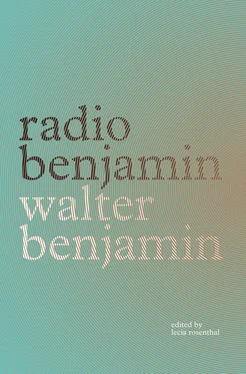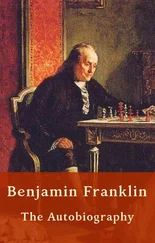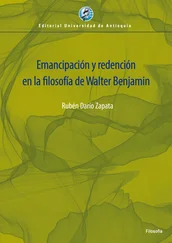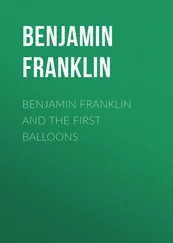“In China we are convinced that the most long-lasting and impressive house in every city must be the government building. After that come the temples. But places of amusement should not draw attention to themselves, because then one would think that in such a city order and work are only a minor matter.” And now, as you know, in many cities in China they really are a minor matter. But we must hope that the theater of blood, in the face of which they have retreated, will soon come to an end. 3
“Theaterbrand von Kanton,” GS, 7.1, 226–31. Translated by Lisa Harries Schumann.
Broadcast on Radio Berlin, November 5, 1931, and on Southwest German Radio, Frankfurt, on February 3, 1932. Benjamin inscribed on the typescript: “Berlin and Frankfurt.” The Frankfurt broadcast was announced in the Südwestdeutsche Rundfunk-Zeitung for February 3, 1932, as the second of two broadcasts on the Youth Hour, which was scheduled to air from 3:15–4:00 pm.
1In 1931, the Yangtze River valley flooded in a catastrophe that killed millions and that has been called the worst natural disaster of the twentieth century.
2See “Der Traum” [The Dream], in Chinesische Schattenspiele, compiled and trans. Wilhelm Grube and Emil Krebs, ed. Berthold Laufer (Leipzig: O. Harrassowitz, 1915), in Abhandlungen der Königlich Bayerische Akademie der Wissenschaften, Philosophische-Philologische und Historische Klass, vol. 28 (Munich, 1917), 440.
3Given the dates of the broadcasts (November 1931 and February 1932), Benjamin is most likely referring to the Sino-Japanese conflicts surrounding the Mukden incident of September 1931—during which Japan almost certainly staged an attack on its own railway lines in Mukden, in Northern China, and used the explosion as a pretext for occupying Manchuria — followed by the Battle of Shanghai in early 1932.
CHAPTER 26. The Railway Disaster at the Firth of Tay
When, at the beginning of the last century, iron foundries began their first trials with the steam engine, it was something altogether different than when modern technicians and scientists work on a new airplane, a space rocket, even, or some other such machine. Today we know what technology is. These scientists and engineers have the whole world’s attention. Newspapers report on their work. Large businesses give them money for their research. But when at the turn of the last century men were creating the inventions that transformed the face of the entire world — the mechanical loom, gas lighting, the iron foundry, the steam engine — no one really knew what these great technicians and engineers were making. Indeed, even they didn’t know the import of their work. It’s hard to call one of these inventions more significant than any other. People today can hardly conceive of them as separate from their use. Nevertheless, it can be said that the most conspicuous changes to the globe over the course of the last century were all more or less related to the rail-road. Today I’ll be telling you about a railroad catastrophe, but not only because it’s a horrible and frightening story. I also want to place it within the history of technology, specifically of railroad construction. The story is of a bridge. This bridge collapsed. It was certainly terrible for the 200 people who lost their lives, for their loved ones, and for many others. Even so, I want to present this accident as only one minor incident in a great struggle, a struggle in which humans have been victorious and will remain victorious if they do not once more destroy the fruits of their own labor.
When I was considering what to talk to you about today, I returned to one of my favorite books. Published around 1840, it’s a thick book containing pictures and, really, just a collection of silly stories and pranks. But what people considered jokes back then makes for curious reading today. In a nutshell, it’s about the adventures of a fantastical little goblin finding his way around outer space. As he’s nearing the planets, he comes across a long cast-iron bridge connecting the myriad celestial bodies:
A bridge so long that you cannot see both ends of it at once, whose supports rest on planets, and which conveys wonderfully smooth asphalt from one globe to the next. The three hundred and thirty-three thousandth support touches Saturn. There our goblin sees that Saturn’s famous ring is nothing but a balcony running all around the planet, on which its inhabitants catch a little fresh air come evening. 1
Now you see what I meant when I said that people back then didn’t really know what to make of technology. For them there was still something amusing about it. Now that things were to be built only using molds and calculations, as was particularly true with iron construction, people found it very funny. Thus there was a playful element to the first constructions of this kind. Iron construction began with winter gardens and arcades, that is, with luxury buildings. But very quickly it found a more appropriate, technological field of application, enabling entirely new constructions to emerge that were, until then, without precedent. Not only did they rely on this new technology, they also catered to entirely new needs. It was then that the first exhibition palaces were built, the first covered markets, and above all, the first railway stations. At that time they were still called “iron railway stations,” and people associated them with the most outlandish ideas. Around the middle of the century one particularly bold Belgian painter, Antoine Wiertz, even petitioned to be able to paint the walls of these first train stations with large ceremonial images. 2
Now, before we look at the Firth of Tay, the great 3,000-meter-wide estuary of the River Tay in central Scotland, let’s first take a look back. In 1814 Stephenson built his first locomotive; 3but only in 1820, once the rails could be effectively rolled, was the rail- road possible. Do not think, however, that everything went according to some systematic plan. No indeed: right away a quarrel broke out over the rails. Under no circumstances, so people thought, would it ever be possible to scrape together enough iron for the English rail network — and back then, of course, people were only imagining a tiny one. Many experts honestly believed that the “steam carts” should be run on granite tracks. In 1825 the first railroad line was opened, and “Locomotive No. 1” is still on display today at one of its terminals. You can be sure that if you’re ever there, at first glance it will look more like a steamroller for flattening pavements than like a real locomotive. In Europe, on the Continent, only very short routes were laid out, which could have just as easily been traveled by post coach or even on foot. Perhaps you’ve heard that Nuremberg and Fürth were the first two German cities connected by the railroad; then came Berlin, Potsdam, etc. For the most part, people saw it as a curiosity. And when the medical professors at the University of Erlangen were asked for their expert opinion of the Nuremberg railroad, they concluded that on no account should the service be permitted: the rapid motion would scramble people’s brains; indeed, the mere sight of these speeding trains was enough to cause people to faint. At a minimum, three-meter-high wooden barriers were required on either side of the tracks. When the second German railroad started running from Leipzig to Dresden, a miller filed a lawsuit claiming it obstructed his wind, and when a tunnel was required, the doctors again weighed in against the railroad: older people might suffer from the shock of the sudden change in air pressure. How people initially thought of the railroad is perhaps most clearly seen in what a great English scholar, who in other matters was no fool, had to say about railroad travel: he didn’t regard it as traveling at all; it was like “being sent somewhere, and very little different from becoming a parcel.” 4
Читать дальше












